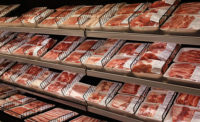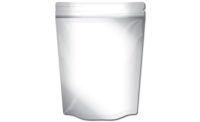Is the playing field as flat as it has ever been for packaging suppliers? There just do not seem to be the dominant brands or players of a decade ago. Prices have been squeezed and re-squeezed, causing once sound margins to suffer, too. This is not meant as a criticism, just an observation.
Certainly it is not by design but, more likely, by circumstance. It is hard to argue that technology and economics have not contributed mightily to change. For the massive and the small alike, the Internet has become an indispensable tool for gathering information and dispatching instantaneous communications, so much so that there are few, if any, unknowns. There are no secrets.
For a decade, supply-chain economics have been relentless in targeting costs and driving them from the system. And packaging, like every other perceived expense in every other link of the chain, is constantly having its edges smoothed to virtual transparency by the unyielding force.
“LOWER COST, LOWER COST,” is the mantra. Then a Category 5 hurricane swirled in. The greatest economic crisis of the past 75 years tore through and whipsawed the marketplace, leaving no one unaffected. Some will argue they remain afflicted.
So what is the upshot? No one believes they should pay for anything. They believe they are either fiscally strapped and, perhaps, deserve a break or, more likely, know enough about suppliers’ costs to challenge their prices with impunity.
Is this packaging’s future? If everyone knows everything about costs or believes they do, then where does “value” fit in? How is it defined, and is there price premium for it?
Knowledge is power, and always it will be so. But knowledge should also serve to enlarge the scope of thinking. What seems to be obscured somewhere in the melee is the value of packaging.
Everyone understands that, compared to costs, it is certainly harder to measure and few buyers are compensated on value delivered. In this atmosphere it is easy to see value getting elbowed aside instead of discussed seriously. But there is evidence that more decision-makers are becoming involved with the buying process.
A recent study by SiriusDecisions Inc., a global B2B research advisory firm, found that having more people in the process has increased the sales cycle by 22 percent over the past five years. We can argue the numbers because they will vary by industry, but the point is there are more people to influence who have influence. Think about that. In their eyes, packaging shouldn’t be defined largely as an expense.
Packaging suppliers should ask themselves constantly if the messages they send are saying we sell value through packaging or we sell containers. It is hard to sell against low price, especially when time and time again competitors knock off technology and make it “good enough.”
Still, the playing field remains mostly flat. Those that can identify a “real” value in their packaging and build compelling messages around it have a better chance of standing above the mob, strengthening their value reputation, and getting paid.








